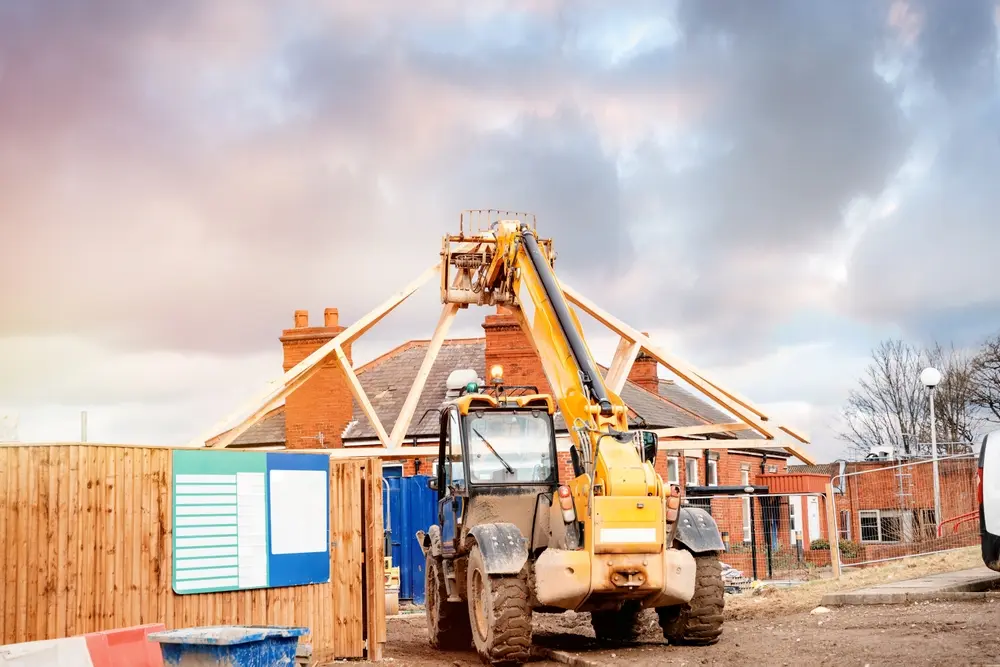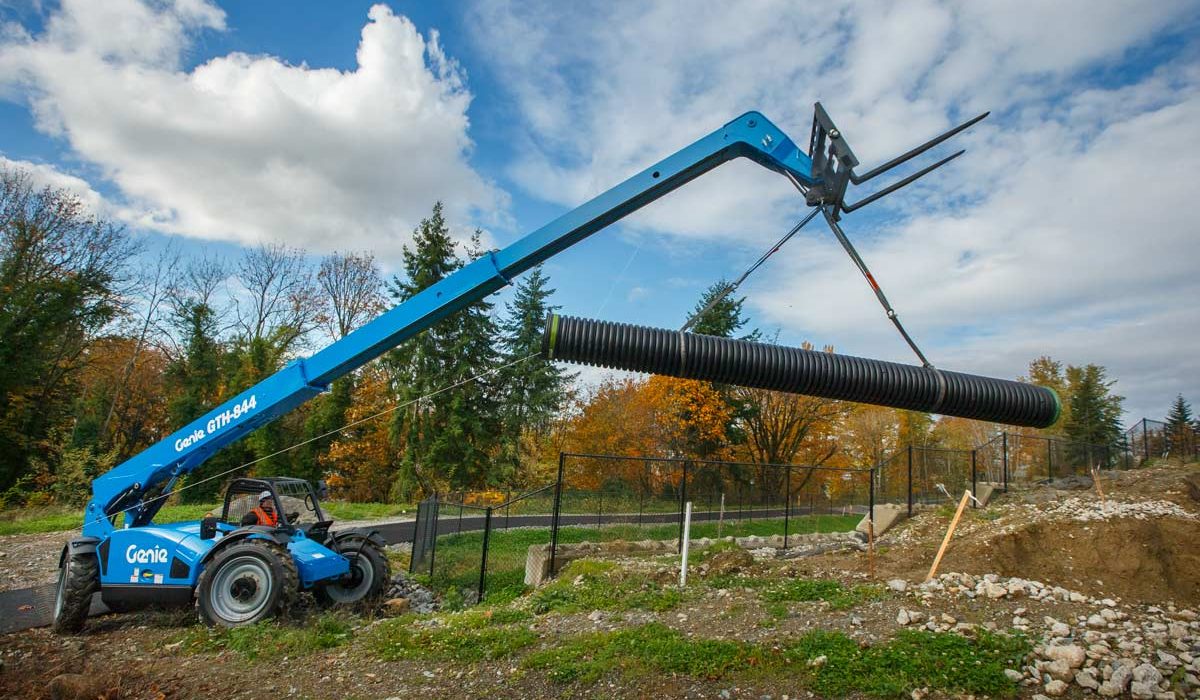Telehandlers are among the most versatile machines used across construction sites and agricultural operations. Combining the features of a forklift and a crane, they offer unmatched lifting capabilities, reach, and functionality. Whether you’re moving materials on a busy job site or transporting hay on a farm, a telehandler can handle it all.
In this guide, we’ll explore what a telehandler is, its key features, common uses, and how to choose the right one for your needs.
What Is a Telehandler?
A telehandler, short for “telescopic handler,” is a multipurpose lifting machine equipped with a telescopic boom that can extend forward and upward. It resembles a forklift but has crane-like capabilities. Designed for rough terrain and heavy loads, telehandlers are widely used in construction and agriculture for their ability to move materials vertically and horizontally with ease.
Key Features of Telehandlers
Extendable Boom
The telescopic boom is the hallmark of a telehandler. Unlike a forklift, which lifts straight up, a telehandler’s boom extends both upward and outward, making it ideal for reaching high or hard-to-access areas.
Versatile Attachments
Telehandlers can be outfitted with a range of attachments including buckets, pallet forks, lift hooks, and winches. This adaptability allows them to serve multiple roles — from lifting pallets to scooping loose material.
All-Terrain Capability
Telehandlers are built to handle rugged environments. With large tires, high ground clearance, and powerful engines, they can easily traverse muddy job sites, uneven farm fields, and other off-road terrains.
High Load Capacity
Telehandlers are capable of lifting several thousand pounds, depending on the model. This high load capacity makes them essential for moving heavy materials safely and efficiently.
Common Uses of Telehandlers in Construction
Material Handling on Job Sites
Telehandlers are ideal for transporting materials such as bricks, lumber, or steel beams around a job site. Their reach and lifting capacity improve productivity and reduce manual labor.
Lifting Pallets to Upper Levels
Need to move materials to the second or third floor of a building under construction? Telehandlers can lift palletized materials to high places, especially when scaffolding or cranes aren’t viable.
Assisting in Framing, Roofing, and Masonry Work
From hoisting trusses into place to delivering roofing materials and masonry blocks, telehandlers provide the necessary reach and stability for precision work in framing and exterior construction tasks.
Telehandlers in Agriculture
Moving Hay Bales and Feed
Farmers use telehandlers to lift and transport large hay bales, bags of grain, and feed. The machine’s strength and reach make feeding livestock and storing feed much more efficient.
Cleaning Barns and Stables
With the right bucket attachment, telehandlers can scoop and remove waste or debris from barns and stables quickly, saving hours of manual labor.
Lifting Supplies to Elevated Storage Areas
From loading lofts with feed bags to stacking supplies in high barn shelves, telehandlers allow farmers to fully utilize vertical storage space.
Choosing the Right Telehandler for the Job

Weight Capacity
First, consider the maximum weight you’ll need to lift. Telehandlers vary in capacity, typically from 5,000 to 12,000+ pounds. Always allow for a safety margin.
Reach Height
Evaluate the vertical and horizontal reach required. Some telehandlers extend up to 55 feet, while others are more compact for tight spaces.
Terrain Type
Will you be operating on paved ground or rough terrain? Choose a telehandler with appropriate tires and ground clearance for the environment.
Attachment Needs
Different jobs require different tools. Make sure the telehandler you choose is compatible with the attachments you need — whether it’s pallet forks, buckets, or a lifting jib.
Safety Tips When Operating a Telehandler
Pre-Operation Inspections
Before use, always inspect the telehandler for mechanical issues. Check fluid levels, tires, brakes, lights, and attachment fittings to ensure everything is in working order.
Stabilization and Load Limits
Always be aware of the load chart specific to your machine. Overreaching or exceeding the lift capacity can cause tipping. Use stabilizers when needed, especially at maximum extension.
Proper Operator Training
Only trained and certified individuals should operate a telehandler. Understanding load dynamics, terrain safety, and operational controls is essential for safe use.
Avoiding Common Hazards
Stay aware of overhead power lines, unstable ground, and poor weather conditions. Always maintain clear communication with ground personnel when operating.
Renting vs. Buying a Telehandler – What to Consider
Buying a telehandler is a major investment, making renting a smart option for short-term or seasonal use. Renting offers flexibility, lower upfront costs, and access to a variety of models and attachments. On the other hand, purchasing makes sense for long-term, high-frequency usage where the cost of repeated rentals could exceed the price of ownership.
Where to Rent a Telehandler in Northern or West Michigan
If you’re in West Michigan and need a reliable telehandler for construction or agricultural use, Winde Performance offers a wide range of telehandlers for rent. Their fleet is well-maintained and includes multiple models and attachment options to suit your specific needs. Whether for a day, a week, or a month, Winde Performance makes it easy to find the right equipment for the job.
Frequently Asked Questions
What is the difference between a telehandler and a forklift?
A telehandler has a telescopic boom that provides both vertical and horizontal reach, whereas a forklift only lifts vertically. Telehandlers are also more suitable for rough terrain.
How much weight can a telehandler lift?
This depends on the model. Most telehandlers lift between 5,000 and 12,000 pounds, though some heavy-duty models can handle even more.
Do telehandlers require a license to operate?
Yes. Operators must typically complete a training program and receive certification in accordance with OSHA or local safety regulations.
Can telehandlers be used on rough terrain?
Absolutely. Telehandlers are designed with all-terrain tires and high-clearance frames to handle uneven and muddy ground.
What attachments can be used with a telehandler?
Common attachments include pallet forks, buckets, lifting jibs, winches, and sweepers. Some models can also accommodate custom or job-specific tools.
How much does it cost to rent a telehandler?
Rental prices vary depending on model size, duration, and location. In West Michigan, expect to pay anywhere from $250 to $600 per day, with discounts for weekly or monthly rentals.
Final Thoughts on Using a Telehandler for Your Next Project
Telehandlers offer a powerful blend of flexibility, strength, and reach that makes them indispensable in both construction and agriculture. From lifting loads to cleaning barns and assisting with framing work, there’s almost no task they can’t handle.
Ready to take on your next big project with confidence? Contact us to find the perfect telehandler for your needs today.

